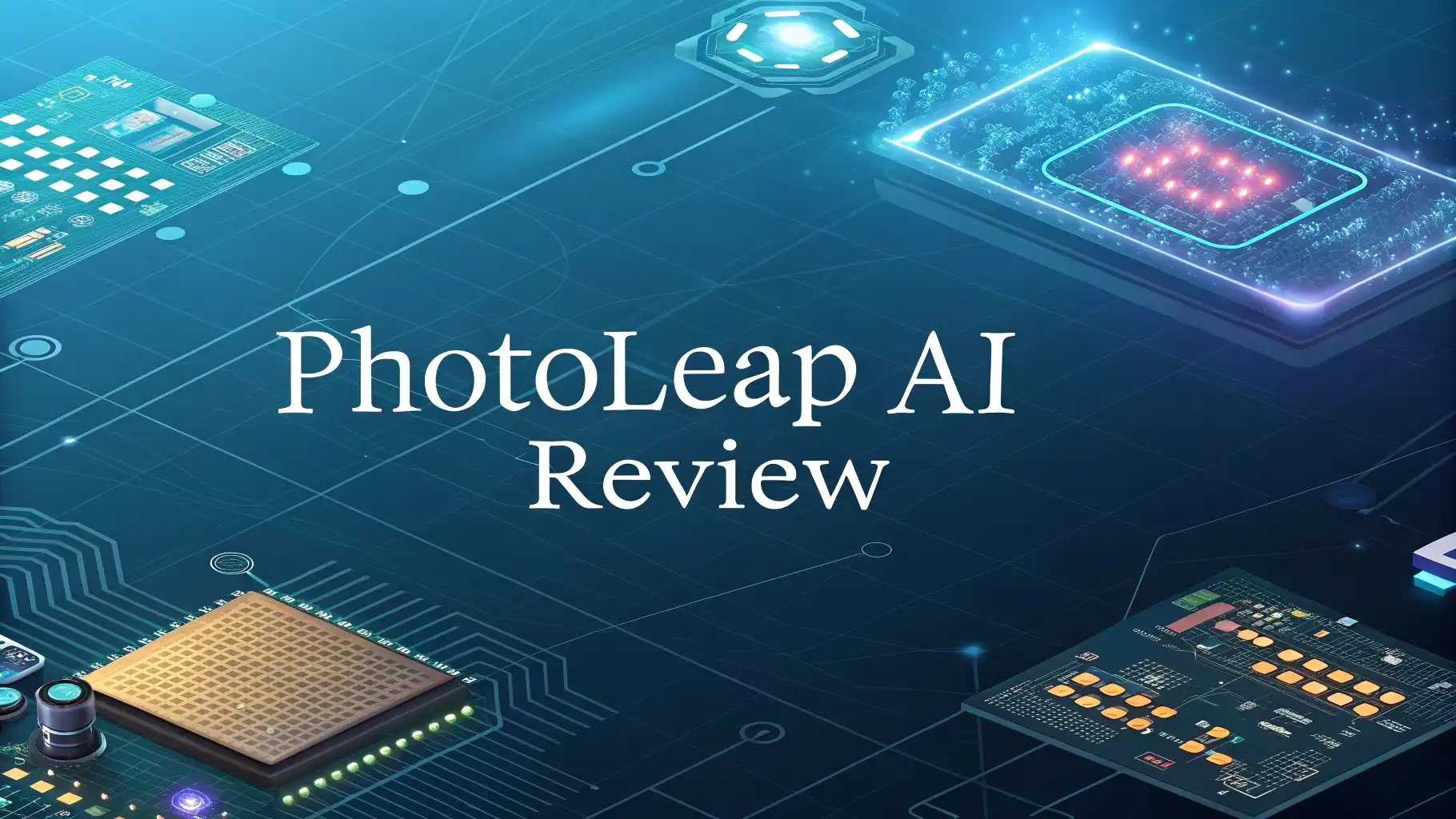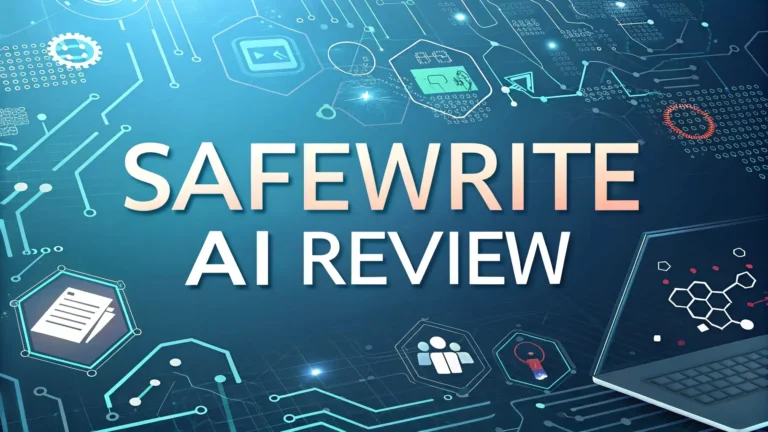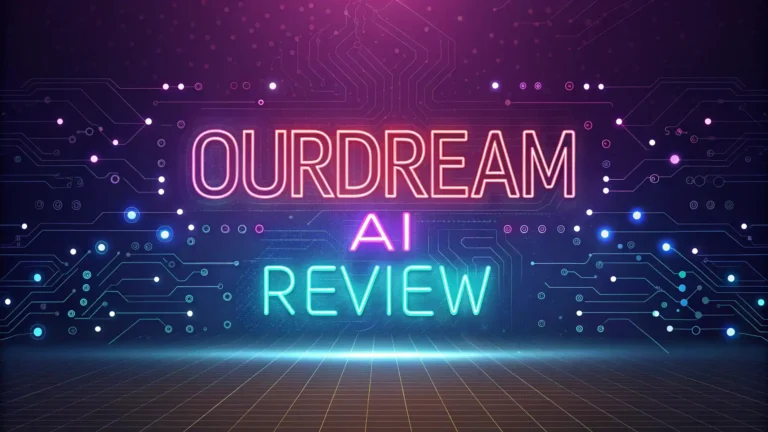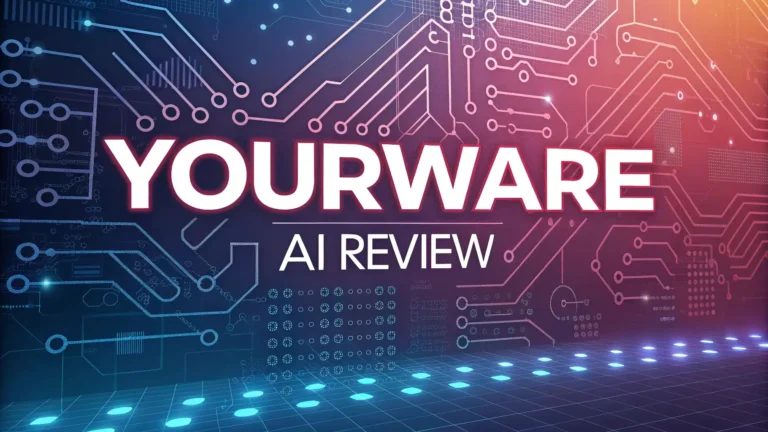Photoleap AI Review 2025: The Ultimate Photo Editor
The digital photography landscape has changed dramatically in recent years, with artificial intelligence reshaping how we create and edit images. Photoleap AI has established itself as a frontrunner in this evolution, offering tools that were once available only to professional photographers and graphic designers.
In 2025, Photoleap continues to push boundaries with its impressive array of AI-powered features that make professional-level editing accessible to everyone.
This powerful mobile application combines intuitive controls with advanced artificial intelligence to transform ordinary photos into extraordinary works of art with just a few taps.
Key Takeaways
- Advanced AI Image Generation has been significantly improved with more accurate results and realistic outputs compared to previous versions
- Multi-layer Editing capabilities allow for complex compositions that rival desktop applications
- Video Creation is now a standout feature, allowing users to transform still images into dynamic short videos with AI assistance
- The user interface has been completely redesigned for 2025, offering intuitive navigation while maintaining powerful functionality
- Background Removal technology has reached near-perfect accuracy, even with complex subjects and lighting conditions
- AI Face Swap features have been enhanced with ethical safeguards to prevent misuse
- Subscription plans start at $6.99 monthly or $59.99 annually with a 7-day free trial option
- The app works on both iOS and Android platforms with regular feature updates
- Real-time collaboration features allow sharing edits with other users directly within the app
- Prompt engineering for AI image generation has been made more accessible with suggested templates
- Photo enhancement capabilities can now rescue even severely underexposed or overexposed images
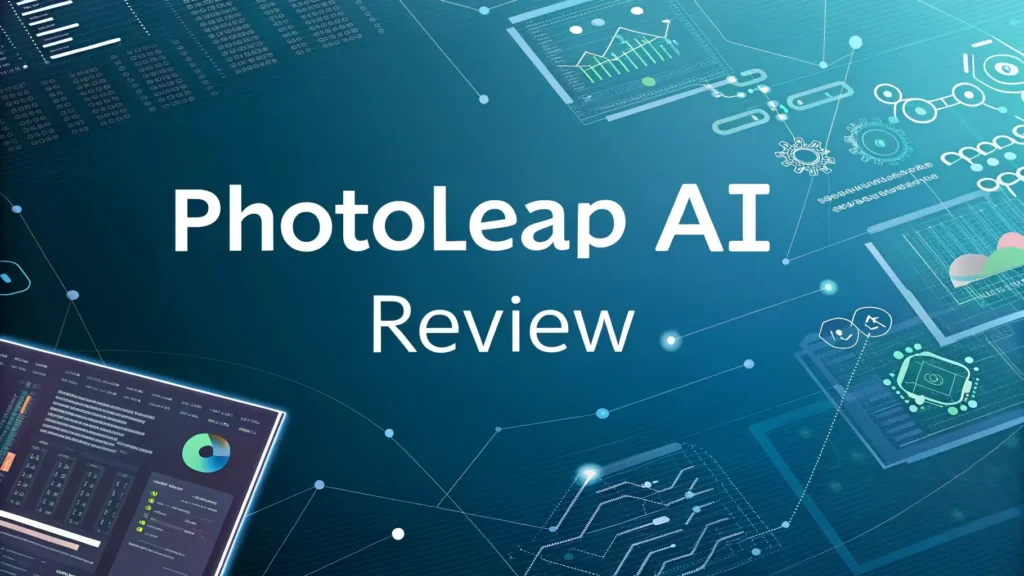
Understanding Photoleap AI’s Evolution in 2025
Photoleap AI has come a long way since its early days as a simple photo editor. The 2025 version represents a significant leap forward in both capabilities and user experience. Originally launched by Lightricks, the same company behind popular apps like Facetune, Photoleap has evolved from basic photo manipulation to becoming a comprehensive AI-powered creative studio.
The application now leverages advanced machine learning algorithms that have been trained on millions of images to understand context, lighting, and composition at a level that approaches human perception.
What sets the 2025 version apart is its enhanced neural network architecture that powers features like object recognition, background removal, and image generation. These improvements have made the app more accurate and faster at processing complex editing tasks.
The development team has focused on reducing the computational load while improving output quality, allowing even older smartphone models to access these advanced features without significant performance issues.
Another notable evolution is the integration of ethical AI principles into the app’s design. As face-swapping and deepfake technologies have raised concerns, Photoleap has implemented safeguards against potential misuse while still providing creative freedom to users. The app now includes visible watermarking options for AI-generated content and clearer terms of use regarding artificially created images.
The community aspect has also expanded, with users now able to share their editing techniques, custom filters, and AI prompts through an in-app social platform. This collaborative approach has created a vibrant ecosystem of creators who push the boundaries of what’s possible with mobile photo editing.
The Revolutionized User Interface and Experience
The 2025 version of Photoleap AI features a completely redesigned user interface that balances power with accessibility. The new dashboard greets users with a clean, minimalist design that doesn’t overwhelm beginners yet provides quick access to advanced tools for experienced users. The interface adapts based on usage patterns, bringing frequently used tools to the forefront and suggesting relevant features based on the current editing project.
Navigation has been streamlined with a gesture-based system that feels natural and responsive. Users can now pinch, swipe, and tap their way through complex editing processes without getting lost in nested menus. The color scheme has been updated with a customizable dark mode that reduces eye strain during long editing sessions, particularly beneficial for professional users who spend hours fine-tuning their creations.
The most impressive aspect of the new interface is how it visualizes AI processes. Rather than presenting AI tools as mysterious black boxes, Photoleap now shows users real-time previews of how each adjustment affects the image. This transparency helps users understand the relationship between their inputs and the resulting changes, making the editing process more intuitive and educational.
The experience is further enhanced by tactile feedback and subtle animations that make the app feel responsive and alive. Performance optimizations ensure that even complex operations like layering multiple effects remain smooth on mid-range devices. The interface also adapts seamlessly between phone and tablet screens, taking full advantage of larger displays when available.
User testing indicates that the new interface has significantly reduced the learning curve for beginners while providing more efficient workflows for professionals. This balanced approach has helped Photoleap appeal to a wider audience without sacrificing the depth that experienced users demand.
AI-Powered Photo Enhancement Capabilities
The heart of Photoleap’s 2025 offering lies in its sophisticated AI photo enhancement tools. These features go far beyond simple filters, using machine learning to understand the content of images and make intelligent adjustments that preserve natural appearances while improving visual impact.
The AI Image Enhancer analyzes photos to automatically correct exposure issues, enhance colors, and improve clarity. What makes the 2025 version special is its ability to recognize different scene types and subjects, applying tailored enhancements for landscapes, portraits, food photography, and more. The enhancement algorithms now consider cultural preferences for color and contrast, allowing users to select regional aesthetic styles that match their target audience.
For portrait photography, the app’s Smart Portrait Enhancement feature has been refined to maintain natural skin textures while correcting blemishes and uneven tones. Unlike earlier versions that sometimes produced an artificial “plastic” look, the 2025 algorithm preserves characteristic features while making subtle improvements that enhance rather than alter a subject’s appearance. The system now recognizes a wider range of skin tones and facial features, addressing previous concerns about bias in AI beauty standards.
The Detail Enhancement tool uses advanced neural networks to recover details in both shadows and highlights, effectively expanding the dynamic range of smartphone photos. This is particularly valuable for images taken in challenging lighting conditions, such as bright sunlight or low indoor lighting. The system can now intelligently separate subjects from backgrounds for targeted enhancement, preventing the halo effects that plagued earlier versions.
Perhaps most impressive is the new AI Restoration feature, which can recover damaged, faded, or low-resolution images. This tool has found particular popularity for preserving family photos and historical images, using contextual understanding to fill in missing details with remarkable accuracy. The restoration process maintains the authentic feel of original photos while removing the artifacts of age and damage.
Advanced AI Image Generation Tools
Photoleap’s 2025 release has dramatically expanded its AI image generation capabilities, positioning it as a serious competitor to standalone text-to-image platforms. The improved Text-to-Image generator can now create highly detailed, realistic images from text descriptions with remarkable accuracy. The system understands complex prompts and can generate images that follow specific artistic styles, time periods, or moods.
What differentiates Photoleap’s implementation is the degree of control it gives users over the generation process. The new Style Controls allow fine-tuning of aspects like composition, lighting, color palette, and artistic influence. Users can combine multiple style references, specifying percentage weights for each to create unique visual aesthetics. This level of control makes the tool valuable not just for casual users but for professional designers seeking inspiration or rapid prototyping.
The Image Variation feature takes generation a step further by allowing users to produce multiple variations of existing photos or generated images. This tool is particularly useful for creating alternate versions of product photography or exploring different creative directions for a project. Each variation maintains core elements while experimenting with composition, lighting, and style.
For more precise control, the Inpainting and Outpainting tools allow selective regeneration of specific areas within an image. Inpainting can replace unwanted elements with contextually appropriate content, while outpainting extends images beyond their original boundaries, creating seamless expansions that maintain the original style and perspective. This feature has proven especially useful for social media content creators who need to adapt images to different aspect ratios without cropping important elements.
The 2025 version also introduces Prompt Templates that help users craft effective text descriptions even without experience in prompt engineering. These templates provide structured guidance for different types of images, making advanced generation accessible to beginners while still allowing customization.
Seamless Object Removal and Background Manipulation
One of Photoleap’s most practical features has received significant upgrades in the 2025 version. The AI Object Removal tool now identifies and removes unwanted elements from photos with surgical precision, intelligently filling the space with appropriate background content. Unlike earlier versions that sometimes left visible artifacts, the new algorithm analyzes surrounding textures, lighting, and perspective to create truly seamless results.
The system can now handle complex scenarios like removing objects that cast shadows or reflections, accounting for these secondary elements in the reconstruction process. It can even remove objects from busy backgrounds where the distinction between subject and background isn’t clearly defined. Tests show successful removal of photobombers from crowded tourist photos and power lines from landscape shots with minimal user input.
Complementing object removal is the enhanced Background Replacement feature. The 2025 version uses improved segmentation algorithms that can accurately separate subjects from backgrounds even in challenging conditions like hair detail, transparent materials, or motion blur. The edge detection has become so refined that even professional photographers have difficulty distinguishing between natural photos and those with replaced backgrounds.
The new Perspective Matching system ensures that replacement backgrounds align naturally with the original image’s perspective and lighting conditions. When users select a new background, the app automatically adjusts its perspective, shadows, and color temperature to match the foreground subject, creating a cohesive final image. This attention to detail eliminates the artificial “cut-and-paste” look that was common in earlier photo editing apps.
For creative projects, the Scene Blending tool allows users to combine elements from multiple photos while maintaining natural lighting and perspective. This feature has become particularly popular for creating surreal compositions and conceptual photography that would otherwise require extensive manual editing or physical set construction.
Creative Filters and Artistic Transformations
The artistic capabilities of Photoleap have expanded dramatically in 2025, with AI now powering a range of creative transformations that go beyond traditional filters. The Style Transfer system has been completely rebuilt to preserve image details while applying artistic styles inspired by famous painters, art movements, or custom references uploaded by users.
Unlike basic filter applications, Photoleap’s style transfer analyzes the structural elements of both the source image and reference style, creating transformations that respect the original composition while authentically representing the target aesthetic. Users can control the intensity of the effect and selectively apply styles to specific areas of an image, allowing for nuanced creative expression.
The AI Art Presets library provides hundreds of one-tap transformations developed in collaboration with contemporary digital artists. These presets combine multiple effects, adjustments, and style transfers to create cohesive looks ranging from subtle enhancement to complete artistic reimagining. Each preset includes customizable parameters, allowing users to adapt them to specific images or personal preferences.
For more experimental creators, the Neural Filters feature offers AI-powered transformations that go beyond traditional editing concepts. These include transformations like time-shifting (making modern photos appear as if taken in different historical periods), weather effects (adding realistic rain, snow, or fog), and mood alterations (changing lighting and color to evoke specific emotional responses). The neural processing ensures these effects integrate naturally with the original image rather than appearing as obvious overlays.
The Texture Synthesis tool represents a significant technical achievement, allowing users to generate or replace textures within images while maintaining natural lighting and dimension. This makes it possible to visualize material changes (like changing fabric patterns on clothing or furniture) or create entirely new textures based on text descriptions. The results maintain appropriate shadows, highlights, and perspective distortion, creating convincing representations of how different materials would appear in the actual scene.
Video Generation Features: The New Frontier
Perhaps the most significant addition to Photoleap in 2025 is its expanded video generation capabilities. This feature transforms the app from a photo editor into a comprehensive visual content creation platform. The Image-to-Video tool can now animate still photos with natural-looking motion, creating short video clips that bring static images to life. The AI analyzes the image content to determine appropriate movement patterns, animating elements like flowing water, swaying trees, or subtle facial expressions.
The Text-to-Video feature represents an even more ambitious development, allowing users to generate short video clips directly from text descriptions. While still limited to sequences of 5-10 seconds, this tool opens new creative possibilities for social media content creators, marketers, and digital artists. The generated videos maintain consistent characters and settings throughout the sequence, with smoothly flowing motion and transitions.
For more control over the video creation process, the Keyframe Animation tool lets users define specific frames while the AI generates smooth transitions between them. This combines the precision of manual editing with the efficiency of AI-assisted generation, making it possible to create custom animations without frame-by-frame drawing or complex software.
The Style-Consistent Video feature ensures that when multiple videos are generated with similar prompts, they maintain consistent visual styles, characters, and settings. This is particularly valuable for creating series of related content or building visual narratives across multiple clips. Users can establish a “style guide” that the AI will reference when generating subsequent videos.
Video outputs support various formats and aspect ratios, optimized for different social media platforms. The export quality reaches up to 4K resolution, though higher resolutions require more processing time. While not yet competing with dedicated video editing software for complex productions, these tools provide quick, accessible options for creating dynamic visual content directly from a smartphone.
Multi-Platform Performance and Compatibility
Photoleap’s 2025 version demonstrates impressive performance across both iOS and Android platforms, with optimizations that balance feature richness with device capabilities. On flagship devices, the full suite of AI features operates with minimal delay, processing even complex operations in seconds rather than minutes. The developers have achieved this through a combination of on-device processing for privacy-sensitive operations and cloud processing for more intensive tasks.
The app implements intelligent resource management that adapts to available device capabilities. On older or mid-range devices, the interface automatically adjusts to prioritize responsiveness, offering simplified previews during editing and delivering full-quality results when processing completes. This adaptive approach ensures that users across a wide range of devices can access the core functionality, even if high-end features require more processing time on less powerful hardware.
Cloud synchronization allows users to seamlessly transfer projects between devices, starting edits on a phone and continuing on a tablet or vice versa. The project file structure has been optimized to minimize data transfer while preserving all editing information, making cross-device workflows practical even with limited connectivity.
The 2025 version introduces a new web companion that extends some editing capabilities to desktop browsers. While not offering the full feature set of the mobile apps, this web interface allows for reviewing and making basic adjustments to projects, as well as managing cloud storage and sharing options. This multi-platform approach acknowledges that creative work often spans different devices and contexts.
The developers have also improved accessibility features, with enhanced voice control support and interface scaling options that accommodate different visual needs. These improvements make the app more inclusive while also providing alternative workflows that some users may find more efficient than traditional touch controls.
Pricing Structure and Subscription Value
Photoleap’s pricing model in 2025 balances accessibility with sustainability, offering both free and premium options. The free version provides basic editing capabilities and limited access to AI features, allowing users to experience the core functionality before committing to a subscription. This tier includes standard adjustments like cropping, filters, and basic retouching, along with a small monthly allowance of AI operations.
The premium subscription unlocks the full range of AI-powered tools and removes usage limitations. Priced at $6.99 monthly or $59.99 annually (representing a 28% savings over monthly billing), this tier provides unlimited access to all current and future features. The subscription includes cloud storage for projects, priority processing for intensive AI operations, and early access to experimental features.
For professional users, the new Photoleap Pro tier offers additional benefits at $14.99 monthly or $119.99 annually. This includes increased cloud storage, commercial usage rights for AI-generated content, batch processing capabilities, and priority technical support. This tier targets content creators, social media managers, and professional photographers who rely on the app for commercial work.
All paid tiers begin with a 7-day free trial that includes full access to premium features, allowing users to thoroughly evaluate the app before committing to a subscription. The trial does not automatically convert to a paid subscription, addressing a common complaint about subscription services.
When compared to competitor pricing, Photoleap positions itself in the mid-range, offering more advanced AI capabilities than similarly priced alternatives while remaining more affordable than professional desktop software. The value proposition is particularly strong for mobile-first creators who need professional-quality results without the complexity and cost of traditional editing software.
Community and Learning Resources
The Photoleap ecosystem extends beyond the app itself, with a robust community and comprehensive learning resources that help users maximize its potential. The Discover Feed within the app showcases creations from other users, providing inspiration and practical examples of different techniques. Users can follow favorite creators, save inspiring works, and even view step-by-step breakdowns of how particular effects were achieved.
The Tutorial Hub offers structured learning paths for different skill levels and creative goals. These range from basic editing fundamentals to advanced AI techniques, with video demonstrations, interactive exercises, and downloadable practice materials. New tutorials are added weekly, often highlighting creative applications of the latest features.
For deeper learning, the Photoleap Academy provides more comprehensive courses developed in collaboration with professional photographers and digital artists. These structured programs combine technical instruction with creative projects, helping users develop both skills and artistic vision. Some academy courses offer certificates of completion that creators can share on professional profiles.
The Community Challenges feature encourages creative exploration through weekly themed contests. These challenges provide specific prompts or techniques to explore, with selected entries featured in the app and on Photoleap’s social media channels. This gamified approach helps users push their creative boundaries while building community connections.
For troubleshooting and technical questions, the Help Center combines searchable documentation with AI-assisted support. The support system can analyze users’ projects (with permission) to provide targeted assistance for specific editing challenges. This personalized support helps users overcome technical obstacles that might otherwise limit their creative expression.
Frequently Asked Questions
Is Photoleap available for free?
Photoleap offers a free version with basic editing capabilities and limited access to AI features. This includes standard tools like cropping, filters, and basic retouching, along with a small monthly allowance of AI operations. The free tier allows you to evaluate core functionality before deciding whether to subscribe. Most advanced AI features require a premium subscription to use without limitations.
How does Photoleap compare to desktop editing software?
Photoleap offers remarkable capabilities for a mobile application, with AI features that rival or even exceed some desktop software in specific areas like background removal and image generation. However, it does not provide the complete precision control and extensive feature set of professional desktop software like Adobe Photoshop. Photoleap excels at quick, impressive edits on mobile devices, while desktop software remains superior for complex professional work requiring precise control and extensive customization. The gap continues to narrow with each update.
Can I use Photoleap AI-generated images commercially?
Yes, with some limitations. The standard subscription allows commercial use of most content you create, including AI-enhanced photos and manipulations of your own images. However, for extensive commercial use of purely AI-generated images (created primarily through text prompts), the Photoleap Pro subscription is recommended as it includes expanded commercial rights and higher resolution outputs. Always review the current terms of service for specific usage rights, as these policies may evolve with changing regulations around AI-generated content.
How secure are my photos when using Photoleap?
Photoleap implements several security measures to protect user content. The app processes many edits directly on your device without uploading photos to servers. When cloud processing is required for intensive AI operations, images are encrypted during transfer and storage. According to the privacy policy, your photos are not used to train AI models without explicit consent, and you can request deletion of your data. The company complies with major privacy regulations including GDPR and CCPA.
Does Photoleap work offline?
The app offers partial offline functionality. Basic editing features work without an internet connection, but AI-powered features like image generation, advanced object removal, and style transfer require connectivity to access cloud processing resources. Any edits in progress are saved locally and synchronize with your cloud storage when connection is restored. For travelers or users with limited connectivity, planning editing sessions to use AI features when connected and basic edits when offline provides the best experience.
What devices support all Photoleap features?
Photoleap runs on iOS devices (iPhone and iPad) running iOS 14.0 or later and Android devices running Android 9.0 or higher. However, performance varies significantly based on device capabilities. For the best experience with all features, particularly AI-intensive operations, recent flagship devices are recommended. On older or mid-range devices, complex AI operations take longer to process, and some high-resolution output options may be limited. The app automatically adjusts its performance expectations based on your device’s capabilities.
In conclusion, Photoleap AI stands as a powerful creative tool in 2025, bringing professional-level photo editing and AI image generation capabilities to mobile devices. With its intuitive interface, extensive feature set, and growing ecosystem, it represents the democratization of visual creation tools that were once accessible only to professionals.
While some ethical questions around AI-generated content remain industry-wide concerns, Photoleap’s thoughtful policies and transparency features demonstrate a commitment to responsible innovation.
For anyone looking to elevate their visual content creation, from casual social media users to professional creators, Photoleap offers an impressive combination of accessibility and power that makes it a standout option in the crowded field of photo editing applications.

